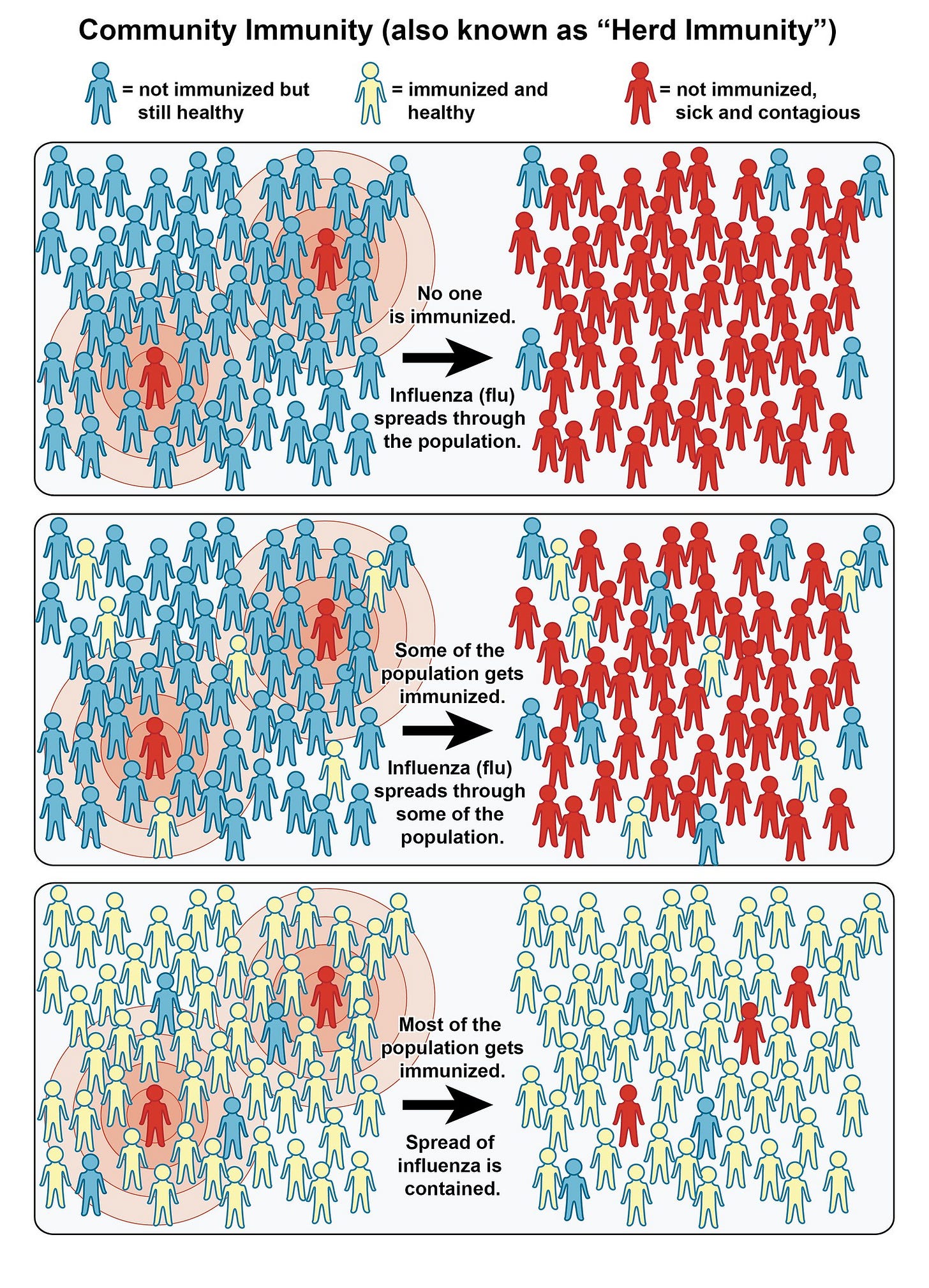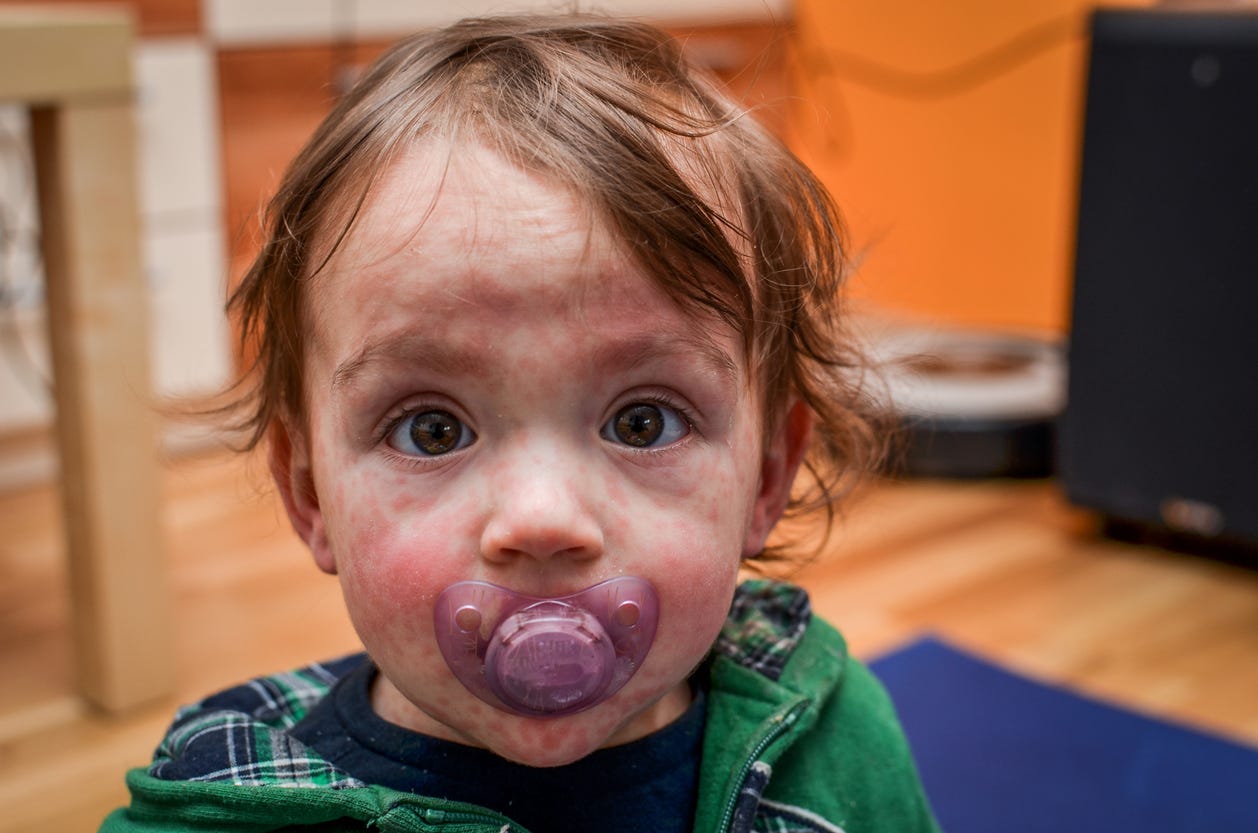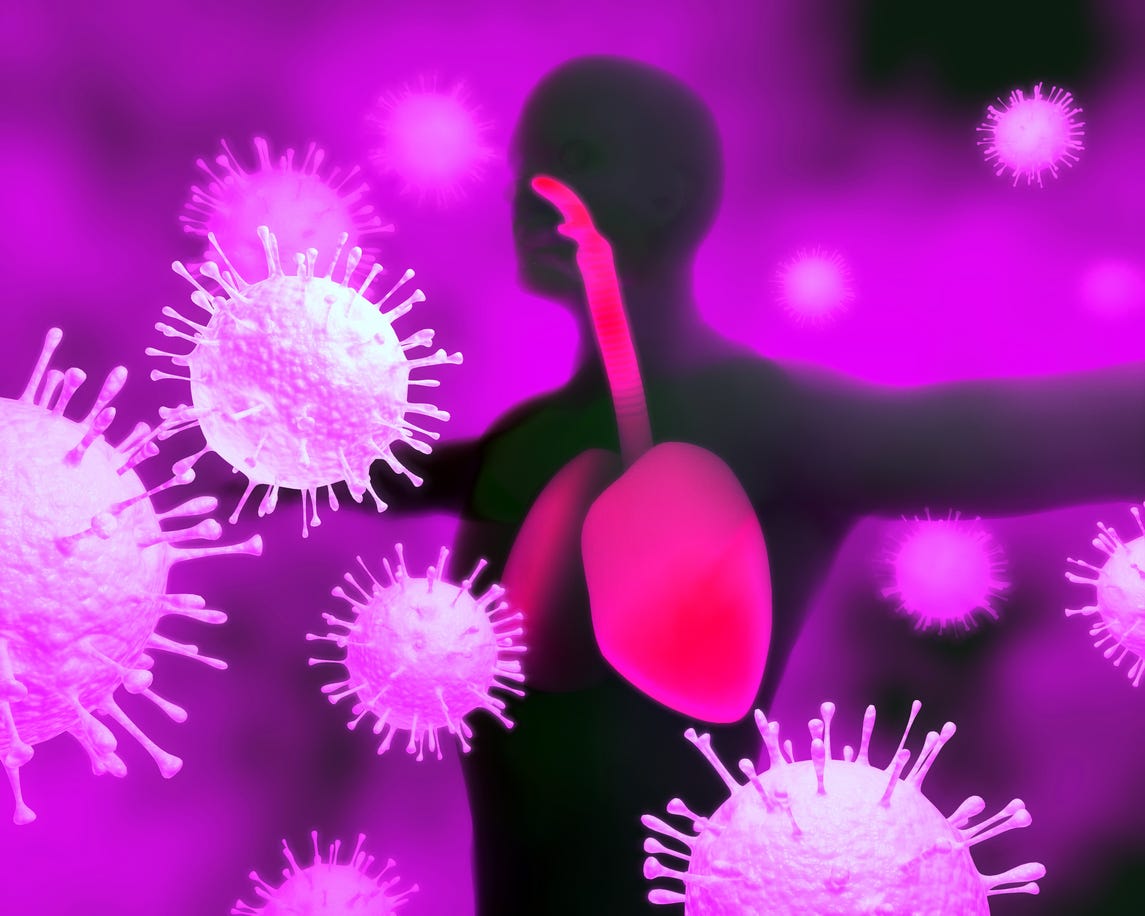Welcome to the One Vax Two Lives Newsletter where we review the latest news on vaccines and answer commonly asked questions. Today, we address how measles infects someone and sets up a potentially life-threatening lung infection.
Another Measles Death
Measles continues to stay in the news. Last week, an 8-year-old unvaccinated girl sadly died in Texas, bringing the death toll to two cases in children (confirmed), and a third suspected in an adult in New Mexico. According to the CDC, there have now been 712 confirmed measles cases in the US as of April 11, 2025. Only 2% of these cases have occurred in fully vaccinated individuals.
Source:
https://www.cdc.gov/measles/data-research/index.html
Why is Measles So Contagious and Deadly?
Measles can remain suspended in the air for up to two hours after an infected person has left the area, making it one of the most contagious viruses known to science. This makes containing a measles outbreak so difficult. All it takes is for someone to go to a school, a store, or an airport to spread the virus to hundreds or thousands of people.
The chance that an unvaccinated person becomes infected with a virus after exposure is called the “attack rate”. Measles infects 9 of 10 unvaccinated people after exposure, one of the highest attack rates known for a virus. In comparison, influenza will infect between 2 and 5 (out of 10) people in the same household. If you thought flu spreads easily, measles is almost twice as contagious.
After the measles virus is inhaled, the virus attaches to cells in the nose and upper part of the throat. Finally, the measles virus spreads to the lungs. Here, it invades the lungs, where it can eventually cause pneumonia. This is why some people with measles can die.
About one week after initial exposure, infected immune cells begin traveling to other organs. In vaccinated children, the immune system would typically recognize and eliminate the virus at this early stage, thereby limiting the spread of the measles virus and the damage it causes to the lungs.
A person with measles is typically contagious for about 8 days, which starts 4 days before the rash appears and continues for 4 days after the rash appears. Often, an infected person might not visit a doctor’s office, urgent care or emergency room right away – increasing the number of people with whom they have contact and might infect. A patient may also have a high fever (up to 104–105°F for 2–4 days) and flu-like symptoms. This is followed by the appearance of whitish-gray spots on the inner cheeks (Koplik spots) and a widespread rash. In severe cases, the infection can spread to the lungs and other organs.
Measles is a severe infection – no two ways about it. About 1 in 5 unvaccinated people that develop measles will be hospitalized, usually to support their difficulty breathing. About 1 in 20 children with measles will develop full-blown pneumonia, a leading cause of measles-related deaths (e.g., a recent case in Texas involving the death of a 6-year-old girl). Measles can also attack the brain. About 1 in 1,000 children develop encephalitis (brain inflammation), which can result in permanent brain damage.
One of the strangest things about measles is that it causes immune amnesia, where the immune system “forgets” the viruses and bacteria that it has previously fought off. Somehow, measles can erase immune memory, reducing a child’s ability to fight off previously encountered infections for months or even years. How the virus does this remains a mystery but imagine having to “start over” in building up the immunity that had taken a lifetime to create.
To prevent a measles outbreak, at least 95% of the population must be vaccinated to achieve “herd immunity”. The graphic below shows how some unvaccinated individuals can escape becoming infected if they are shielded by a “herd” of vaccinated folks. However, in Gaines County Texas, the epicenter of the largest measles outbreak this year, the current kindergarten MMR vaccination rate sits at just 82%.

Sources:
https://www.nytimes.com/interactive/2025/04/05/health/measles-children-symptoms.html
Measles in Pregnancy
Like many infections, measles can be more severe if acquired in pregnancy. A pregnant woman infected with measles is more likely to be hospitalized, acquire measles pneumonia, and die than a non-pregnant woman. When the mother becomes sick with measles, there is also a greater chance that the pregnancy ends in a preterm birth, miscarriage, or stillbirth.
Measles and its severe health consequences can be avoided through vaccination. Vaccination during childhood or any time prior to pregnancy should provide lifetime protection from the illness. In our last newsletter, we discussed how to assess whether you are immune to measles or not. Please check our post below to learn more about how you can protect yourself from the measles!
How Do You Know if You Are Immune to Measles? https://open.substack.com/pub/onevaxtwolives/p/how-do-you-know-if-you-are-immune?
Sources:
https://pubmed-ncbi-nlm-nih-gov.offcampus.lib.washington.edu/31891729/
https://pubmed-ncbi-nlm-nih-gov.offcampus.lib.washington.edu/25899422/
Our Resources
Go to the One Vax Two Lives website to learn more about our work and publications, access our trifold brochure, and read FAQs.
If you know someone who would like to receive our newsletter in their inbox, please share this post by clicking below. You can even share this post on social media.
Happy sharing!
Still have questions? Send us a message or a question in our Substack Chat - join here!
onevaxtwolives.substack.com/chat











Dr. Ben Edwards in Texas, is treating patience while he has an active measles infection.
https://medium.com/@jsteier_29203/dont-mess-with-measles-texas-doctor-treats-patients-while-visibly-infected-bd711c40571a